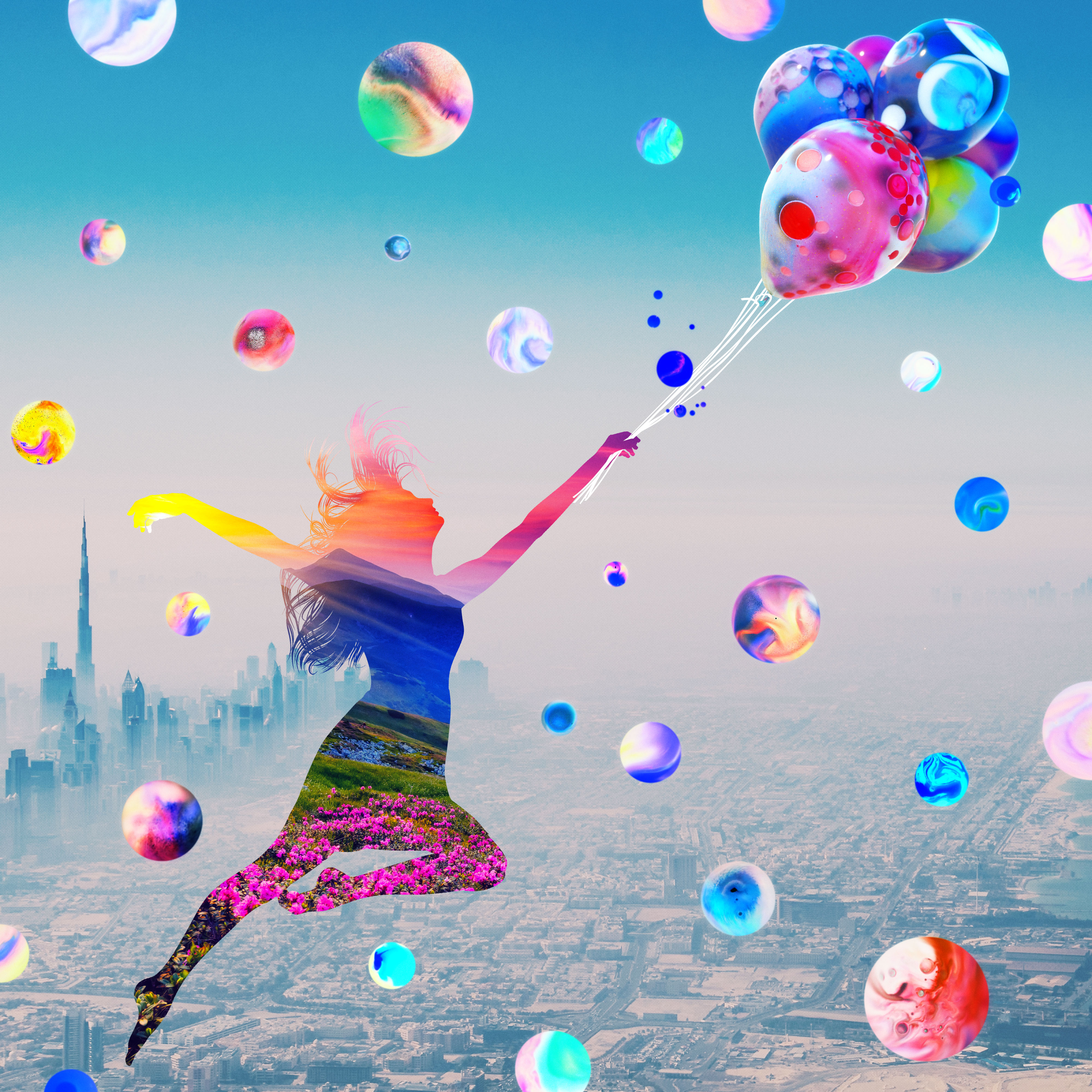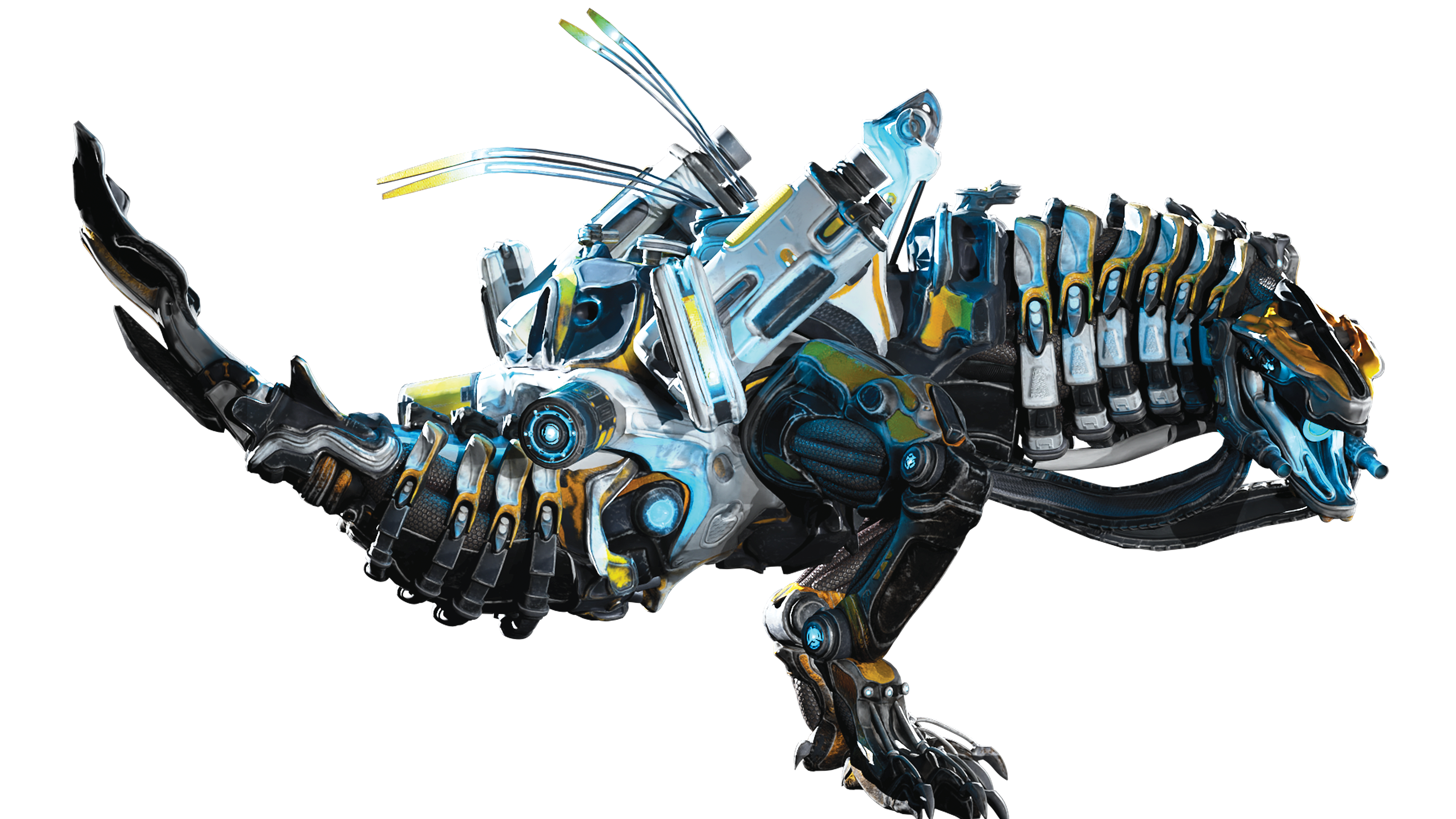Create a multi-exposure image with Adobe CC
Recreate this striking image using Adobe's full suite of tools.
Adobe tasked me with creating an illustration to express the concept of multilocalism, and above you can see my response. In this tutorial, I’ll walk through my creative process using all the tools in Adobe's Creative Cloud. You can see how I went from vision to finished artwork using Photoshop CC, Illustrator CC, Dimension, Adobe Stock – and some traditional paints. To learn more techniques, take a look at our roundup of the best Photoshop tutorials and Illustrator tutorials.

When Adobe asked me to illustrate the concept of multilocalism, the idea of a silhouette of a person with a balloon flying through a city came to my mind almost immediately. To me, it expresses freedom and movement. I used a multi-exposure technique to express the contrast between the place where we are and where we wish to be, and to show the transition from monochrome reality to a bright dream.
01. Create a silhouette
I begin by searching Adobe Stock for a photo I can turn into a silhouette. If you’re new to Adobe Stock, you can download 10 images for free to get you started. I consider many pictures of dancers and jumping people until I find one that suits my idea perfectly.
I license two photos of the woman in different poses because I like the position of the head in one and the body in another. Sometimes, even a slight difference in hand rotation can make all the difference. In Photoshop, I combine parts from both photos into one rough figure, before switching into Illustrator to draw the silhouette with the Pen tool.
I mostly follow the outline of the figure but do change some elements, such as a foot, as I go along. I also license a panorama of the city, a photo of a sunny landscape, and a 3D object of a balloon, all of which I’ll use later in my process.
02. Draw in your hair
The next step is to draw in the hair. This is one of the most important details in the illustration – the free and airy hair in this photo was one reason I chose it. It took me more than 90 minutes to draw the hair.
I recommend that you start with larger objects and gradually move on to smaller ones. Using Illustrator’s Pen tool, I outline large curls around which I’ll draw in finer details. On the top of the figure’s head there’s a curl that may look like a horn in the silhouette – I’ll fix that later.
Get the Creative Bloq Newsletter
Daily design news, reviews, how-tos and more, as picked by the editors.
When drawing small curls and hair, I create my own Illustrator brushes. It’s best to create several brushes in different sizes. I draw individual hairs with the Pen tool. If you have a graphics tablet, it’s better and faster to use the Brush tool, but I only work with a touchpad. Once the silhouette is finished, I save the Illustrator file with a transparent background.
03. Get your paints out
I want a few abstract, bright textures to fill the balloons and decide to make them with paints, water and oil. It’s important to use liquid paint that is not thick. I fill syringes with paints, pour oil on a dish, and play with the colours. Because of the oil, the paint drops don’t spread, but stay in a ball shape. To mix colours, I add water.
04. Adjust in Photoshop
I photograph the results of my analogue experiments. You’ll want good quality images here, so dig out your best camera for this. I open the files in Photoshop to crop them and adjust the levels.
05. Try a touch of 3D
To make the balloons for the final artwork, I could have just drawn silhouettes and filled them with my paint textures. However, I want the balloons to look real, so I begin with a 3D file from Adobe Stock and open that in Adobe Dimension, the new 3D app in the Creative Cloud. I make copies of the balloon, group them, and then apply the textures I made with paint. I haven’t worked with 3D for a long time, but Dimension is simple to use and fairly intuitive.
06. Put it all together
In Photoshop, I create a new document sized 4000 × 4000px. I copy and paste the city panorama, a bright landscape, the silhouette, and the balloons and arrange them on the artboard. Using a clipping mask, I fill the silhouette with the bright landscape.
07. Make final adjustments
To increase detail in the landscape, I run a filter called Color Efex Pro’s Detail Extractor from the Nik Collection (a range of super-useful Photoshop plugins) and then duplicate the layer to increase the brightness. Later, I apply Gaussian Blur and the Soft Light Blend mode.
Now for any final tweaks. I want to see more elements, so I add circles cut from the textures with multicoloured overflows. This also brightens the image.
Read more:

Thank you for reading 5 articles this month* Join now for unlimited access
Enjoy your first month for just £1 / $1 / €1
*Read 5 free articles per month without a subscription

Join now for unlimited access
Try first month for just £1 / $1 / €1
